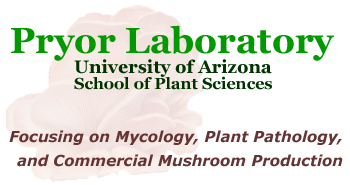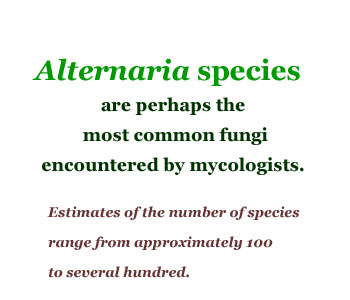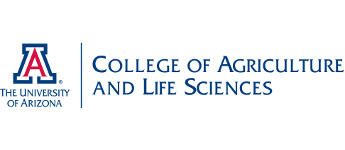The Genus Alternaria

Alternaria species are perhaps the most common fungi encountered by mycologists working in a wide range of professions. Estimates of the number of species range from approximately 100 to several hundred, although specific data are difficult to assess due to the proliferation of nomenclatural synonyms of dubious taxonomic validity.
Many species are common saprobes found in a variety of habitats and are ubiquitous agents of decay. Citations from literature report recovery from such diverse substrates as sewage, leather, wood pulp, paper, textiles, building supplies, stone monuments, optical instruments, cosmetics, computer disks, and jet fuel.
As plant pathogens, over 4000 Alternaria/host associations are recorded in the USDA Fungal Host Index, and the genus ranks 10th among nearly 2000 fungal genera listed based on the total number of host records. As decomposers of foodstuffs, Alternaria spp. are ubiquitous postharvest pathogens and contribute to the spoilage of 20-40% of our agricultural output. In contrast, several Alternaria spp. have shown promise as beneficial biocontrol agents of certain weed pests and as mycoparasites of other fungal pathogens.
In medical mycology, Alternaria species and other phaeosporic hyphomycetes are gaining prominence as emerging human pathogens, particularly in immuno-compromised patients. Several Alternaria species and numerous uncharacterized Alternaria taxa have been found associated with infections of the cornea, oral and sinus cavities, respiratory tract, nails, and skin. In a number of cases, these infections have been fatal.
Alternaria species are some of the most prodigious producers of toxic secondary metabolites, producing over 70 compounds of varying toxicity. Some of these metabolites are powerful mycotoxins with mutagenic and teratagenic properties, and have been linked to certain forms of cancer.
As such, the occurrence of Alternaria secondary metabolites in foodstuffs such as grains, peanuts, tomato products, apple sauce, olive oil, and fresh fruits and vegetables is becoming an increasing environmental concern. Perhaps more importantly, Alternaria spores are one of the most common and potent indoor and outdoor airborne allergens. Additionally, Alternaria sensitization has been determined to be one of the most important factors in the onset of childhood asthma. In summary, few fungal taxa can match the global impact of Alternaria on humans and human activities.


